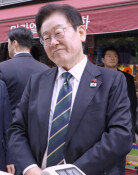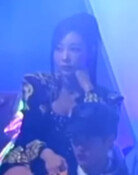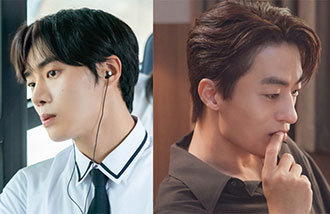Painted Screen Is Korean Beauty Artifact
Painted Screen Is Korean Beauty Artifact
Posted February. 22, 2007 03:42,
Movie star Choi Ji-woo is a woman who looks like the standard beauty in Pyongyang from the Joseon Dynasty period, and Song Hye-gyo has the same type of beauty that was prized in Jangseong, Jeonnam in that era. But the most beautiful woman among eight beauties on a folding screen from that period is from Jinju, Gyeongnam.
An in-depth study of facial shapes and figures of beauties of eight provinces from the Joseon Dynasty was revealed for the first time yesterday.
Art scholar and expert in faces Jo Yong-jin, who lectures at Hanseo University, made these announcements on February 21 about a folding screen which shows beauties of eight Korean provinces from the 19th and early 20th centuries.
This is the first time that facial features of women from eight provinces have been confirmed based on real-life paintings, even though the face shapes of Joseon-era women had been vaguely deduced from historical materials and general paintings in the past.
The folding screen was painted by Cha Yong-shin (1850-1941), who was known as his eras best portrait painter. It shows eight realistic, full-length figures of women and gisaeng (Korean geishas) from Seoul, Pyongyang, Jinju/Gyeongnam, Jangseong/Jeonnam, Gangneung/Gangwon, Cheongju/Chungbuk, and Gochang/Jeonbuk.
The screen had been known before, but a full study of the features of the painting had not been conducted until Chos.
Professor Cho, who has studied and restored faces of Korean women based on anatomy and traditional art for 30 years said, There is a signature on the folding screen, and characters in the painting match in our database of characteristics of women from each province. He hypothesizes that the painting was intended for visitors to a Korean geisha house.
He pointed out that women from Pyongyang (Gye wol hyang), Jangseong (Jiseon), Jinju (Sanhong), Gangneung (Ilseon) and Seoul (Nangnang) have prominent characteristics among the eight beauties on the folding screen, and he evaluated that Jinju has the most beautiful figure among the eight women depicted.
The woman from Jinju on the painting has a large and low forehead, with eyebrows located high on the face, large protuberant eyelids, and a bit broad gap between the eyes.
Mr. Cho said, A standard of beauty depends on the person, but the beauty of Jinju gives an elegant impression because her length of face from eyebrows to the nose is long. Moreover, since her chin is small and the length between her nose to upper lip is short, it makes the woman look younger and is a charming image from a modern viewpoint.
The beauty of Pyongyang on the screen is typical of Pyongyang women during the Joseon Dynasty with an elongated head-shape, high cheekbones, and pointed chin. The beauty of Gangneung on the screen has a long face and high forehead.
Cho said, Through the painting I have come to know why women in Pyongyang and Jinju were known as the best beauties in the era of Joseon Dynasty. Movie star Choi Ji-woo looks like a beauty of Pyongyang, and Song Hye-gyo has so much in common with the beauties of Jangseong.
The director of the Jeonju National Museum, Lee Won-bok, said Thanks to analyses, we have basic data for the facial shapes of beauties in the Joseon Dynasty, and this will help revitalize studies about not only portraits of the Joseon Dynasty, but also life and culture in that era.
Professor Cho plans to restore the faces of beauties from eight provinces in three dimensions and offer them to be used as research data and culture content.
kplee@donga.com







